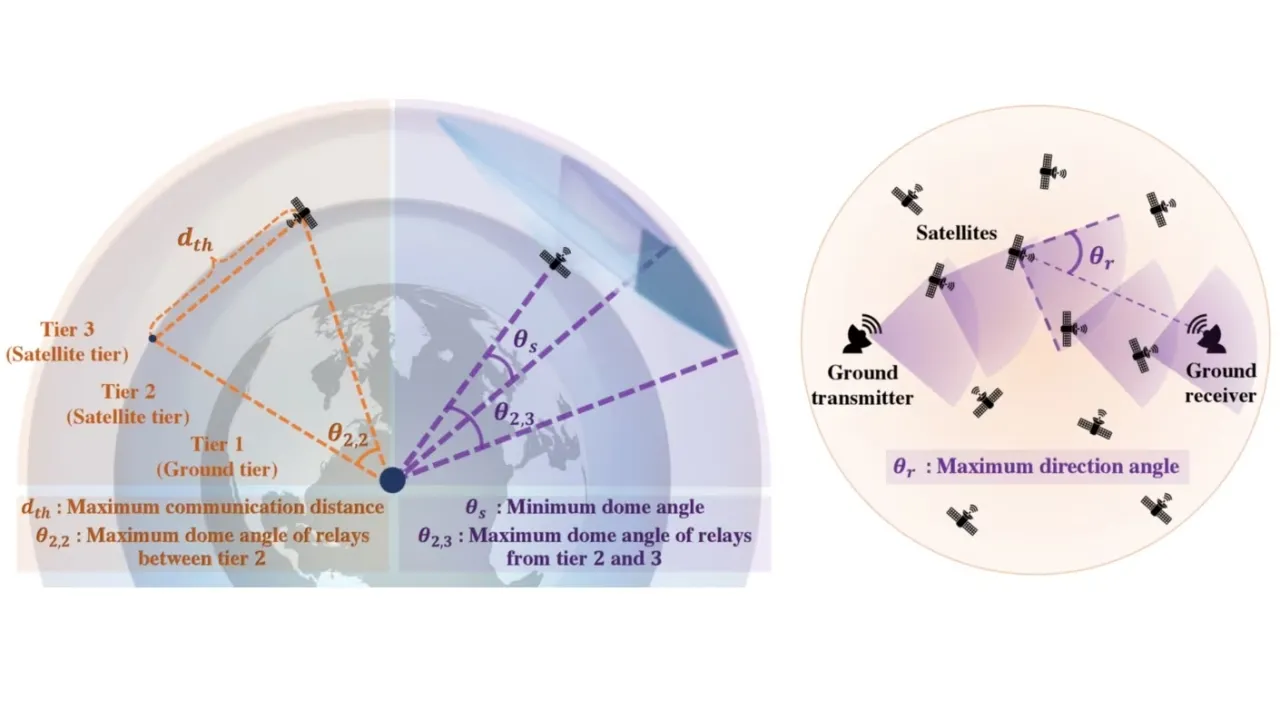
Research explores enhancing reliability in hybrid satellite-terrestrial networks
About
A team of researchers from the Communication Theory Lab (CTL) at KAUST, including Ruibo Wang, Mustafa A. Kishk, and Mohamed-Slim Alouini, has achieved a significant advancement in the field of communication networks. Their research article, titled "Reliability Analysis of Multi-hop Routing in Multi-tier LEO Satellite Networks," led by KAUST Professor Mohamed-Slim Alouini, addresses the critical issue of network reliability within complex multi-tier hybrid satellite-terrestrial relay networks (HSTRN).
Reliable communication networks are fundamental for global connectivity in today's interconnected world. The integration of satellite and terrestrial technologies within HSTRNs offers the potential to extend communication access to remote and underserved regions. However, ensuring the dependability of these networks presents unique challenges.
"We introduce a concept called interruption probability to measure reliability. This metric measures the likelihood of a network hop occurring without any relay device (ground gateway or satellite) available," said Ruibo, a Ph.D. student at KAUST, explaining this concept.
To provide insights into network reliability, Wang, Alouini, and Kishk, who contributed as a postdoctoral researcher at KAUST and now serves as an assistant professor at Maynooth University in Ireland, applied innovative methods. These methods involved assessing the interruption probability from a single-hop perspective and extending it to multi-hop scenarios using advanced techniques.
The research underscores the importance of prioritizing the tier of communication devices within HSTRNs to manage reliability effectively. KAUST researchers propose three distinct priority strategies for tier selection: the stationary optimal priority strategy, the single-hop interruption probability-inspired strategy, and the density-inspired strategy. Additionally, the research explores how terrestrial and satellite devices can complement each other, uncovering opportunities for optimization. Furthermore, the insights into network reliability have broader implications, extending to other system-level metrics analysis such as satellite availability and coverage probability.
This research represents a step forward in enhancing the reliability of multi-hop routing within complex hybrid satellite-terrestrial networks. "It has the potential to greatly improve connectivity in remote and challenging environments and represents a significant contribution to advancing ultra-reliable and low latency communications," emphasized Kishk.
More information available in the paper:
R. Wang, M. A. Kishk and M. -S. Alouini, "Reliability Analysis of Multi-hop Routing in Multi-tier LEO Satellite Networks," in IEEE Transactions on Wireless Communications, doi: 10.1109/TWC.2023.3293467.


